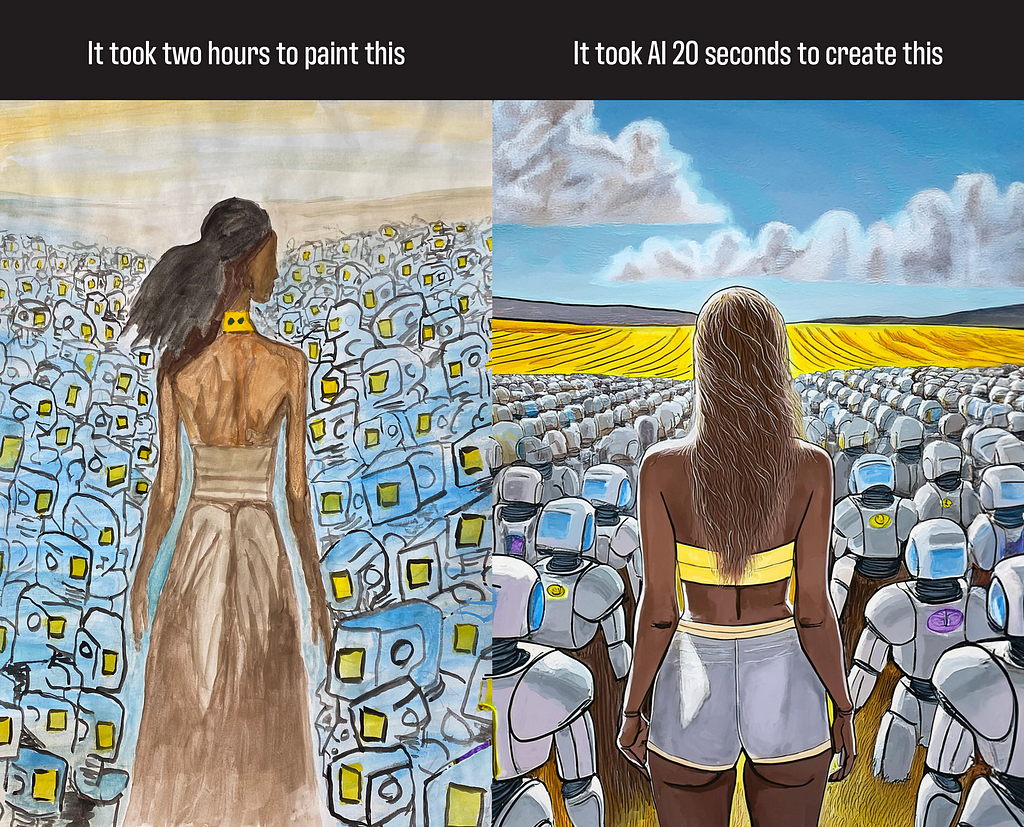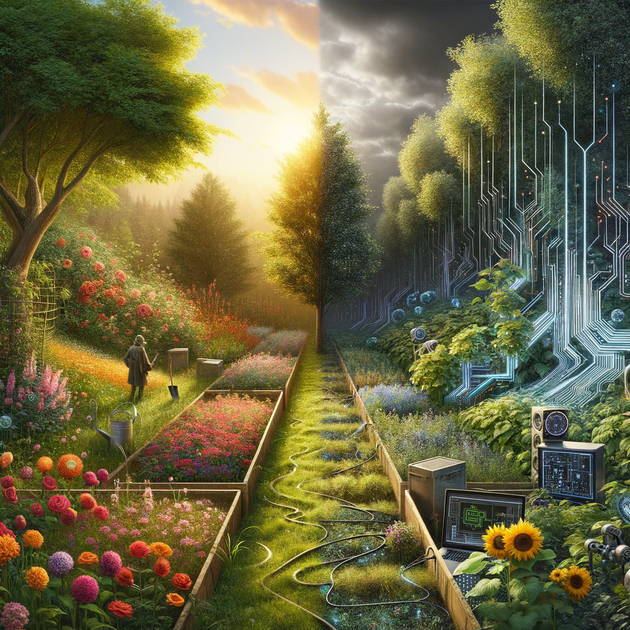How Generative AI Is Uprooting Meaningful Human Work: An Ecological Perspective
Imagine a world filled with weeds—an environment where nature’s spontaneous intruders suffocate carefully tended gardens, disrupting the beauty and purpose cultivated by human hands. Now, picture AI as this relentless force, edging out the meaningful work that gives our lives purpose.
The Reality of AI’s Displacement
Recent discussions about artificial intelligence (AI) have often revolved around its capacity to eliminate drudgery and low-value tasks. However, this discourse frequently overlooks a crucial point: AI isn’t just replacing mundane jobs; it is also encroaching upon meaningful, fulfilling human work.
We saw this vividly in last year’s screen actors’ strike and this year’s voice-over actors’ strike in the video game industry. Both groups love what they do and find deep meaning in their work, yet generative AI tools are threatening their livelihoods.
The Creative Crisis
Consider creative writers. In an era dominated by AI-generated journalism and AI-composed books, many writers are struggling to find their footing. The literary marketplace is flooded with AI-generated content, drowning out the voices of aspiring and established writers alike.
Visual artists face similar challenges. Generative AI models that can create artwork in seconds are undermining years of human effort and skill, using unauthorized scans of human artists’ work to produce copies that are indistinguishable to the untrained eye.
Real-World Example: Lizzie, a painter from New York, has seen her income plummet as AI-generated art floods online platforms. “I spent years perfecting my technique,” she says, “but now AI can replicate my style in seconds and sell it at a fraction of the price.”
An Ecology of Artificial Weeds
AI has primarily been discussed in economic and technical terms, leaving out its ecological impacts. Understanding the role of AI within society requires a new perspective—an ecological one. Whereas ecologists consider how various species interact to sustain an ecosystem, we should evaluate how AI and humans coexist within our societal framework.
Think of humanity and AI as part of a delicate ecological balance. In stable environments, diverse plant life, including perennials and trees, coexist harmoniously. However, when the soil is disrupted, weeds take over, thriving in these newly disturbed conditions. Generative AI functions much like these fast-spreading weeds, quickly occupying every niche left open by disrupted traditional industries.
The Impact on Creative Fields
For instance, consider the world of visual art. Human artists take hours, sometimes years, perfecting a piece, while AI models can generate similar artwork almost instantaneously. The sheer speed and low cost of AI production devalue human creativity.

On the left, we have a painting that took two and a half hours to complete. On the right, a similar piece created by AI in 20 seconds. While the AI-generated image lacks the unique imperfections and soul of the human-made one, it overwhelms the market with quantity.
Just as weeds overrun a garden, generative AI content swamps digital spaces, making it harder for human-made content to stand out. This has ramifications far beyond economic loss; it erodes the very meaning and purpose we derive from our creative endeavors.
The Path Forward: Horticultural Lessons
Resisting the spread of generative AI may seem like an impossible task, but every gardener knows that the victory of weeds is not as inevitable as it first seems. To regain control, we need to stop repeatedly disrupting our societal ground. Digital disruptions caused by Silicon Valley’s relentless innovation cycles have unsettled countless industries, from journalism to art.
Silicon Valley’s promise that each new technological advancement will yield unprecedented productivity and wealth has proven hollow. Gig work, social media, and even the much-hyped metaverse—all have led to further disruption without delivering on their promises.
Practical Steps
- Stop Disrupting: Focus on nurturing long-term projects and professional relationships instead of succumbing to the allure of every new digital trend.
- Suppression of Weeds: Implement measures, such as taxing the output of generative AI tools, to slow down their rapid growth.
What if we imposed a modest tax on every AI prompt? Consider a ten-cent tax on each request to generative AI platforms like ChatGPT or DALL-E. While small, this tax would add up, generating funds that could support cultural institutions crucial to human creative work: libraries, theaters, galleries, and publishing houses.
Taxation and Its Benefits
Taxing AI-generated content has several benefits:
- It would reduce unnecessary AI usage, fostering more thoughtful interactions.
- Funds from the tax could support human-created cultural initiatives.
- It would level the playing field, making it fairer for human creators.
Digital corporations like Microsoft and Google are heavily subsidizing AI tools to make human competition difficult. Imposing a tax would be a step towards balancing the scales, ensuring human creative efforts are not overshadowed by an onslaught of AI-generated content.
Final Thoughts: Cultivating a Balanced Digital Ecology
Generative AI, like weeds, spreads rapidly in disrupted environments, stifling the growth of meaningful human work. However, by stopping the cycle of disruption and implementing thoughtful measures like AI taxation, we can cultivate a digital ecosystem where human creativity and AI tools coexist sustainably.
Ultimately, we must ask ourselves: What kind of world do we want to live in? One dominated by mindless, rapid production or one where meaningful, human-created work has the space to thrive? Let’s work together to ensure it’s the latter.
What measures do you think would be effective in preserving meaningful human work in the age of AI? Share your thoughts in the comments below.
